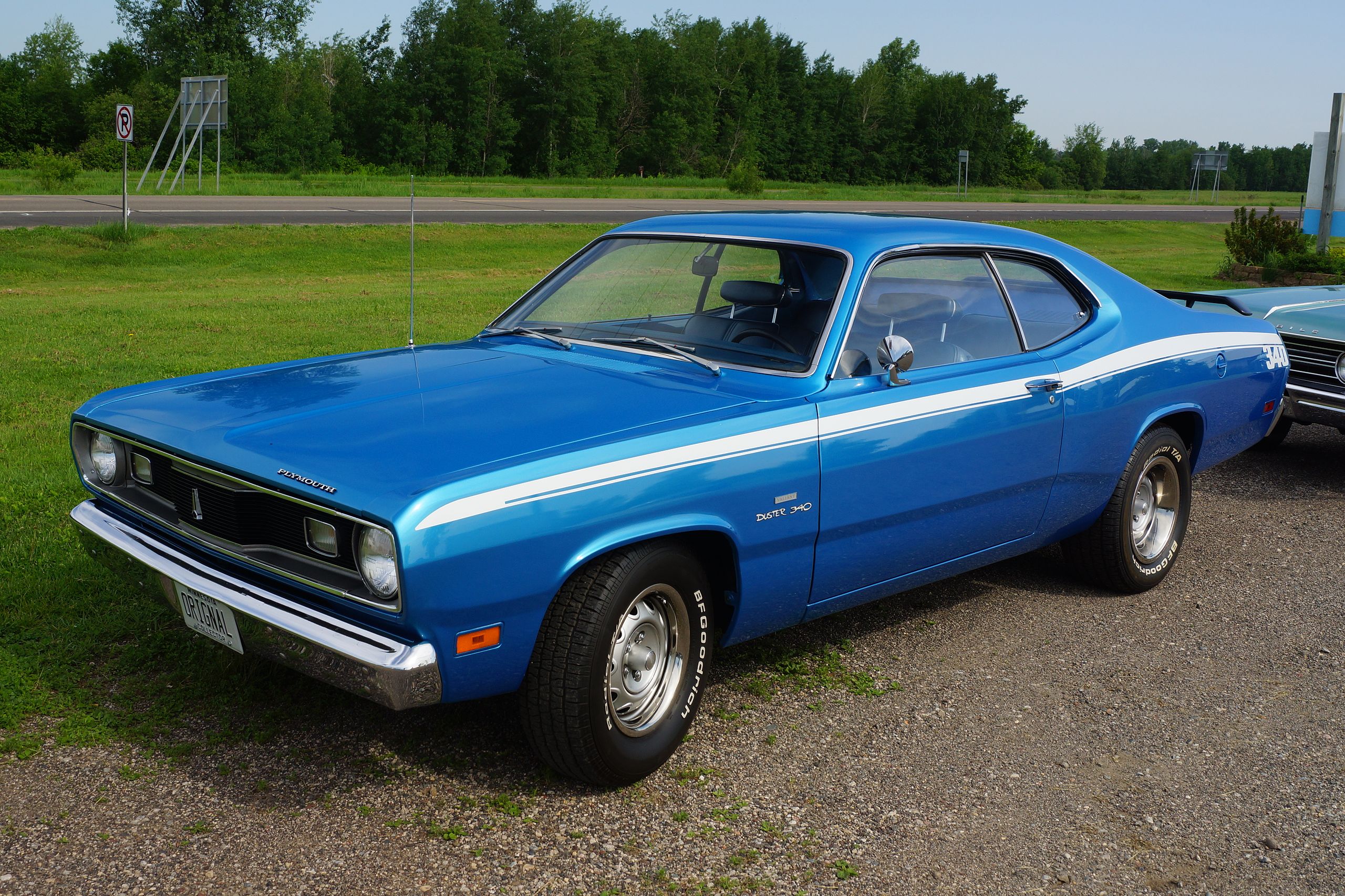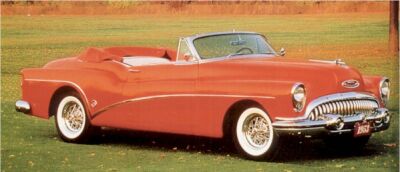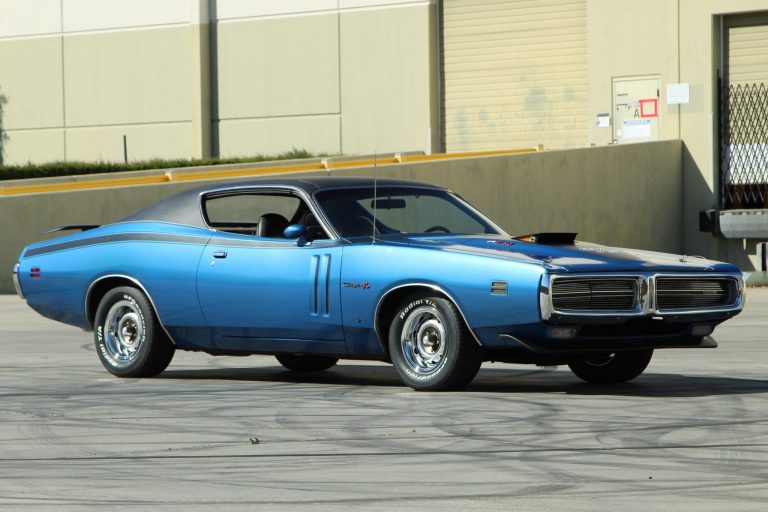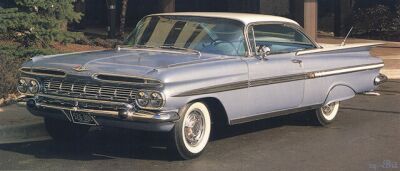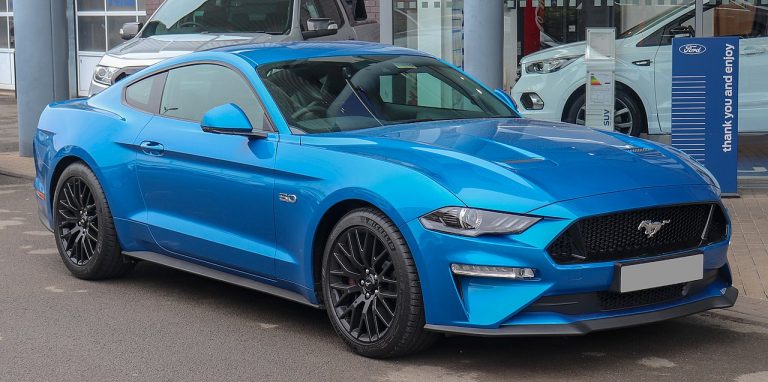Plymouth Duster

Meet Chandler
Chandler has a bachelors and masters degree in history as well as a passion for classics and muscle cars. His education and historical knowledge makes him skilled at crafting highly detailed articles about America’s muscle cars and automotive history. His love of muscle cars is undeniable, with him seeking them out at every opportunity during his visits to auto shows and car meets. Chandler’s knowledge and enthusiasm towards automotive history make him a great asset to the Muscle Car Club community.
From 1970–1976, the Plymouth Duster was a mini muscle car that offered decent performance at bottom-level prices. Plymouth created the Duster to be a performance version of the economy Valiant, and it came with both six and eight cylinder engines. Residing on the Chrysler A-body, the Duster shared a body style with the Plymouth Barracuda and Dodge Dart, and it inspired the creation of the original Dodge Demon. Though it was relatively short lived, the Duster sold tremendously well and was a staple of Plymouth in the early-1970s.
Plymouth Duster Overview
Plymouth debuted the Duster for the 1970 model year and was discontinued following the 1976 model year. They created the duster from the already existing Valiant, and they essentially made it a performance version. All models were two-door hardtop coupes, and no sedans or convertibles were ever produced. At its peak, Plymouth sold more than half-a-million annually. Its Dodge counterpart was the Dart.
Originally, Plymouth wanted to use the Tasmanian Devil from Warner brothers as the mascot, similar to what they did with the Plymouth RoadRunner. However, it ended up being too expensive, and they scrapped the idea. Instead, the Duster used a brand new Twister logo created by Chrysler.
There were several different trims available, including the Feather Duster, Gold Duster, Space Duster, Duster Twister, Silver Duster, and Duster 340 and 360. The Feather Duster was aimed at fuel efficiency, and used lightweight parts on the body and engine and came with a 225 cid slant-six engine. It was the Plymouth counterpart to the Dodge Dart Lite. The Space Duster had a fold-down rear seat and security panel, giving it an absolutely massive amount of cargo space – hence the name.
The Duster 340 and Duster 360 were named for the displacement of the V8 engine they carried. Plymouth’s Gold and Silver Dusters were named for the paint packages which included colored badges and stripes. The Duster Twister was basically an appearance package to make your car look like a 340 but with a less-powerful 225 or 318 engine under the hood.
For the 1977 model year, Plymouth replaced the Duster with the Volaré (Dodge Aspen), and the namesake has never been reborn. They are still widely available on the collectors market today, and are some of the most affordable ‘70s muscle cars out there.
1970 Plymouth Duster
Plymouth launched the Duster in late-1969 as part of the 1970 model year. Plymouth based it completely on the Valiant, making it essentially a performance version. They reportedly only had $15 million to design the car and make it sell, which is why they reused so many Valiant parts. Plymouth marketed the Duster as a rival to the Ford Maverick, Chevrolet Nova, and AMC Hornet, among others.
The Duster rode on the same A-body platform as the Valiant and only came as a two-door hardtop coupe. Compared with the Valiant, the Duster was a semi-fastback design that had new sheetmetal from the cowl back and the windshield was steeper.
For the first year, the available models were just the Duster and Duster 340 trims – the latter containing the 340 small-block V8. Midway through the year, Plymouth introduced a third Gold Duster package, which was mainly an appearance package including badges, stripes, dual horns, whitewall tires, scalp rails, front bucket seats, and a cigarette lighter.
1970 Plymouth Duster Engine Technical Specifications
| Model Years | Engine | Horsepower | Torque |
| 1970 | 198 cid inline-six (1bbl) | 125 horsepower | 180 lb-ft |
| 1970 | 225 cid inline-six (1bbl) | 145 horsepower | 215 lb-ft |
| 1970 | 318 cid V8 (2bbl) | 230 horsepower | 320 lb-ft |
| 1970 | 340 cid V8 (4bbl) | 275 horsepower | 340 lb-ft |
1970 Plymouth Duster Engines, Transmission, and Performance
For the 1970 Plymouth Duster, Chrysler offered four engines: 198 and 225 cid inline or slant-sixes, and two small-block V8s: a 318 and 340 cid. Both of the six-cylinder options were for the economy minded, had 8.4:1 compression, solid valve lifters, and used single-barrel carburetors – Holley for the 225 and Carter Ball and Ball BBS for the 198.
Plymouth turned up the wick with the LA Series 318 cid small-block pushrod V8, which made 230 horsepower and 320 lb-ft of torque. The 318 used hydraulic valve lifters and a Carter BBD double-barrel carburetor. The top dog was the LA Series 340 cid V8, which pumped out 275 horsepower and 340 lb-ft of torque with a four-barrel carburetor. Reportedly, it could run the ¼ mile in the low-14s at just under 100 mph.
When combined with its low price at just $2,547 from the factory, the Duster 340 V8 was the ultimate combination of power and speed. Compared with the base Plymouth RoadRunner, another budget option, it was still $300 less, and was about half the price of the high performance Plymouth Superbird, which cost $4,300.
Plymouth offered three transmissions for the Duster: A three-speed floor-shift manual, a four-speed floor-shift manual, or a three-speed TorqueFlite automatic. The three-speed manual was standard in the Duster 340
1970 Plymouth Duster Production Numbers
| Model Year | Bodystyle | Production Total |
| 1970 | Duster VL | 192,375 |
| Duster 340 VS | 24,817 | |
| 1970 Total | 217,192 |
1971 Plymouth Duster
The Plymouth Duster returned for 1971 mostly the same as the year prior. Buyers had their choice of 18 different color options, and the grille and rear end were slightly revised. The Valiant name plates disappeared, and the standard Duster included all Valiant features and then some. Additions included swing-out rear quarter windows, ventless side glass, twin stacked horizontal slatted tail lights, and of course, Duster emblems.
The Duster 340 had everything the base did, but also got a vertically segmented “sharktooth” grille, dual exhausts, heavy-duty suspension, and a twin-snorkel air cleaner. Option packages included the DeLuxe, Sports, and Twister trims. Like before, the front matched the Valiant’s construction until the cowl, and from there back it was unique.
1971 Plymouth Duster Engine Technical Specifications
| Model Years | Engine | Horsepower | Torque |
| 1971 | 198 cid inline-six (1bbl) | 125 horsepower | 180 lb-ft |
| 1971 | 225 cid inline-six (1bbl) | 145 horsepower | 215 lb-ft |
| 1971 | 318 cid V8 (2bbl) | 230 horsepower | 320 lb-ft |
| 1971 | 340 cid V8 (4bbl) | 275 horsepower | 340 lb-ft |
1971 Plymouth Duster Engines, Transmissions, and Performance
For the 1971 Plymouth Duster, Chrysler carried over the same four engine options as the year prior. Power output was still unchanged, but Plymouth had to start listing both SAE Gross and SAE Net ratings together. Previously, Plymouth only had to use SAE Gross measurements, which generally do not account for variables like parasitic loss – which SAE Net does. With the new ratings, the 340 V8 rated just 235 horsepower and 310 lb-ft of torque Net.
1971 Plymouth Duster Production Numbers
| Model Year | Bodystyle | Production Total |
| 1971 | Duster | 173,592 |
| Duster 340 | 12,886 | |
| 1971 Total | 186,478 |
1972 Plymouth Duster
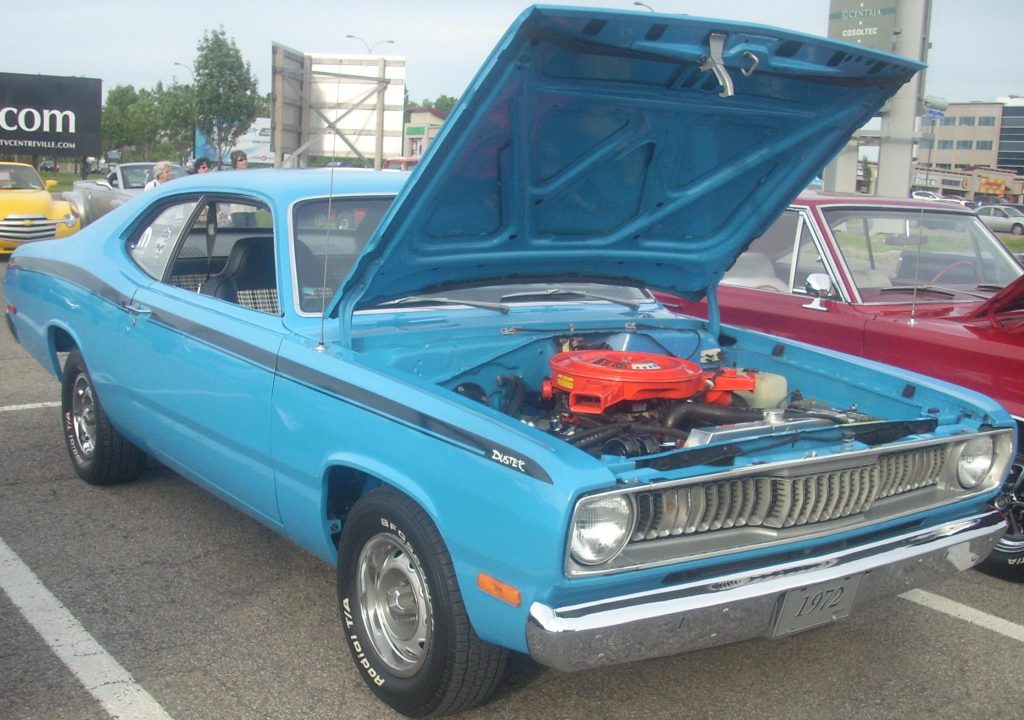
Plymouth returned the Duster again for 1972, and again it looked almost exactly the same as the prior two years. The iconic cartoon logo on the Twister debuted in 1972. Other packages included the Gold Duster, which had a gold reptile grain canopy style vinyl top and decals on the fender sides. The Duster 340 was denoted by its 340 lettering, lower-deck striping, bodyside tape striping, and the unique grille.
1972 Plymouth Duster Engine Technical Specifications
| Model Years | Engine | Horsepower | Torque |
| 1972 | 198 cid inline-six (1bbl) | 100 horsepower | 160 lb-ft |
| 1972 | 225 cid inline-six (1bbl) | 110 horsepower | 185 lb-ft |
| 1972 | 318 cid V8 (2bbl) | 150 horsepower | 260 lb-ft |
| 1972 | 340 cid V8 (4bbl) | 240 horsepower | 290 lb-ft |
1972 Plymouth Duster Engines, Transmission, and Performance
The 1972 Plymouth Duster was the first year that Chrysler was forced to list power ratings in SAE Net only. As a result, all of the engines appeared to be less powerful, even though they had nearly the same Net rating as their 1971 counterparts. The top dog 340 V8 rated at 240 horsepower and 290 lb-ft of torque Net. It is true that the engines were also slightly detuned for emissions purposes, but those differences were relatively small. The same three-speed manual and automatic transmissions were still available.
1972 Plymouth Duster Production Numbers
| Model Year | Bodystyle | Production Total |
| 1972 | Duster | 212,311 |
| Duster 340 | 15,681 | |
| 1972 Total | 227,992 |
1973 Plymouth Duster
The 1973 Plymouth Duster received its first significant changes in appearance. These included a new hood, rear and front ends, bumper guards, and upgraded interiors. New interior improvements included an electric window defogger, ventless side glass, and low-back style seats were an option in the Duster. This year marked the debut of the Space Duster, which had the fold-down backseat for extra cargo space. Plymouth made the Gold Duster and Duster Twister available again, as well as the Duster 340.
1973 Plymouth Duster Engine Technical Specifications
| Model Years | Engine | Horsepower | Torque |
| 1973 | 198 cid inline-six (1bbl) | 100 horsepower | 160 lb-ft |
| 1973 | 225 cid inline-six (1bbl) | 110 horsepower | 185 lb-ft |
| 1973 | 318 cid V8 (2bbl) | 150 horsepower | 265 lb-ft |
| 1973 | 340 cid V8 (2bbl) | 235 horsepower | 295 lb-ft |
1973 Plymouth Duster Engines, Transmission Options, and Performance
For the 1973 Plymouth Duster, the engine options remained the same and their power was largely unchanged. Starting in 1973 the four-speed manual transmission was dropped, leaving either the standard three-speed manual or the three-speed TorqueFlite automatic.
1973 Plymouth Duster Production Numbers
| Model Year | Bodystyle | Production Total |
| 1973 | Duster | 249,243 |
| Duster 340 | 15,731 | |
| 1973 Total | 264,974 |
1974 Plymouth Duster
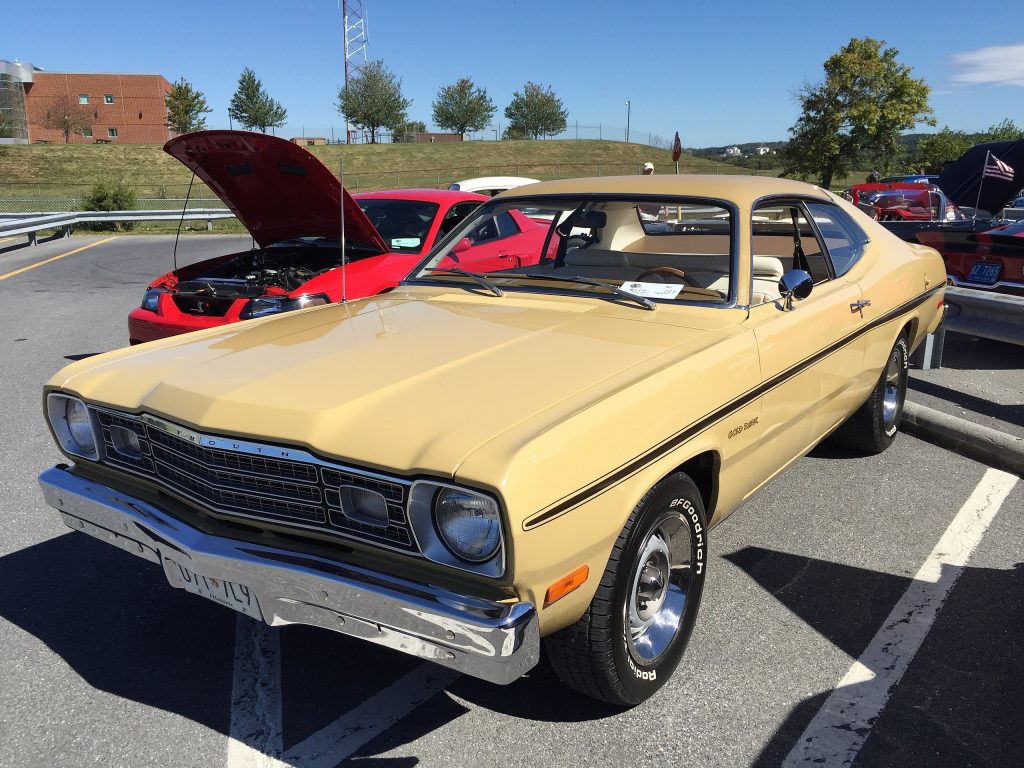
The 1974 Plymouth Duster remained nearly identical as the year prior. For the year, the only real additions were optional front and rear bumper guards, and some of the decals and stripes were different from the year prior. The Twister, Gold Duster, and Space Duster trims were available in addition to the base. The Twister package was $124.05 and had unique Rallye wheels, a front sway bay, dual racing mirrors, and the Twister cartoon decal. In comparison, the Gold Duster was more expensive at $187.25, and had a canopy vinyl top, DeLuxe insulation and wheel covers, and a special decal.
For buyers that wanted it, an optional Gold Duster/Twister package was available for $234.60, which included the best of both trims. The Space Duster was the cheapest package at just $88.80 extra. Also, the Duster 340 was replaced with the Duster 360 to indicate the new larger displacement engine.
Interestingly, Plymouth decided to remove the rear fender decals from the 340 on the 360, though it kept the same stripes. The 1973 Plymouth Duster 360 package also included a floor-shifter for the manual transmission, heavy-duty suspension, power front disc brakes, an electronic ignition, and optional axle ratios.
1974 Plymouth Duster Engine Technical Specifications
| Model Years | Engine | Horsepower | Torque |
| 1974 | 198 cid inline-six (1bbl) | 100 horsepower | 170 lb-ft |
| 1974 | 225 cid inline-six (1bbl) | 105 horsepower | 180 lb-ft |
| 1974 | 318 cid V8 (2bbl) | 150 horsepower | 255 lb-ft |
| 1974 | 360 cid V8 (4bbl) | 245 horsepower | 320 lb-ft |
1974 Plymouth Duster Engines, Transmission Options, and Performance
For 1974, Plymouth kept the 198 and 225 slant-sixes as well as the 318 small-block V8. They dropped the 340 small-block in favor of the slightly larger 360 cid small-block V8 of the same engine family. The 360 V8 made 245 horsepower and 320 lb-ft SAE Net as the most powerful option.
1974 Plymouth Duster Production Numbers
| Model Year | Bodystyle | Production Total |
| 1974 | Duster | 277,409 |
| Duster 360 | 3,969 | |
| 1974 Total | 281,378 |
1975 Plymouth Duster
The 1975 Plymouth Duster returned once again basically the same as the year prior. New additions were 50,000 mile spark plugs and a new “Clincher” warranty that covered everything except tires for the first year of ownership. A new trim level was the Custom Duster, which was somewhat of a luxury version. The Gold Duster continued to be an option.
Prices on the Plymouth Duster greatly increased in 1975, leading to diminished sales and enthusiasm. Whereas before the Duster was a great value, by 1975 that was starting to fade. The Duster 360 cost more than the RoadRunner now at $3,979, a far cry from its $2,500 price years prior. This led to sales decreasing by more than 50%, and less than 2,000 customers opted for the 360 package.
1975 Plymouth Duster Engine Technical Specifications
| Model Years | Engine | Horsepower | Torque |
| 1975 | 225 cid inline-six (1bbl) | 100 horsepower | 170 lb-ft |
| 1975 | 318 cid V8 (2bbl) | 150 horsepower | 255 lb-ft |
| 1975 | 360 cid V8 (4bbl) (CA Only) | 190 horsepower | 270 lb-ft |
| 1975 | 360 cid V8 (4bbl) | 230 horsepower | 300 lb-ft |
1975 Plymouth Duster Engines, Transmission Options, and Performance
Once again, Plymouth offered the 225 slant-six and 318 and 360 small-block V8s. They dropped the 198 slant-six for 1975, making the 225 the smallest option. For the 360 V8 Plymouth offered two versions: One for California that was detuned for emissions, and one for the rest of the country. The California Duster 360 made 190 horsepower and 170 lb-ft, while the standard Duster 360 put out 230 horsepower and 300 lb-ft – which were still below the year prior. A three-speed manual and three-speed TorqueFlite automatic were available.
1975 Plymouth Duster Production Numbers
| Model Year | Bodystyle | Production Total |
| 1975 | Duster | 118,710 |
| Duster 360 | 1,421 | |
| 1975 Total | 120,131 |
1976 Plymouth Duster
The 1976 Plymouth Duster underwent some minor changes from the year prior. These included a modified grille, restyled rear end, and new taillights. Available packages included the Silver Duster instead of the Gold Duster, and a new Feather Duster Package. The Feather Duster was a fuel economy package that had lightweight aluminum parts like the intake manifold, inner panels on the hood and deck, long axle ratios, and the Fuel Pacer System. The Feather Duster was very popular, and almost a quarter of all Dusters sold had it equipped.
This marked the final year of the Duster (and Dodge Dart), as Chrysler scheduled it to be succeeded by the Plymouth Volaré (Dodge Aspen). Sales were barely 10% of what they were at their peak, and the Duster 360 was no longer a separate model.
1976 Plymouth Duster Engine Technical Specifications
| Model Years | Engine | Horsepower | Torque |
| 1976 | 225 cid inline-six (1bbl) | 100 horsepower | 170 lb-ft |
| 1976 | 318 cid V8 (2bbl) | 150 horsepower | 255 lb-ft |
| 1976 | 360 cid V8 (4bbl) | 220 horsepower | 280 lb-ft |
1976 Plymouth Duster Engines, Transmission Options, and Performance
For the final year of the Duster, Chrysler had the same 225, 318, and 360 cid engines as the year prior. The exception was California, where the 360 V8 was not an option due to emissions restrictions. The 360 did not have a catalytic converter fitted to it, so it was not allowed to be sold in the state. Plymouth’s Duster’s inglorious end was marked by subpar power outputs, with the 360 making only 220 horsepower and 280 lb-ft of torque.
1976 Plymouth Duster Production Numbers
| Model Year | Bodystyle | Production Total |
| 1976 | Duster | 26,688 |
Plymouth Duster Legacy
For seven model years, the Plymouth Duster was a great value muscle car. It was cheaper than the RoadRunner and other similar models by at least a few hundred dollars, and it was a significant discount over big-block beasts like the Superbird. The Duster offered decent performance with a 275 horsepower 340 V8 for the first few years, but soon emissions restrictions and new SAE Net power ratings combined to slowly diminish power output.
In 1975, Plymouth raised the price of the Duster by hundreds, eliminating its utility as a bang-for-your-buck mini muscle car. 1976 was the last year of the Duster, as it was discontinued and soon succeeded. Today, Dusters are some of the most affordable collectible muscle cars from the 1970s, and offer great nostalgia in a beautiful package.
* Thanks to Ron Kowalke’s “Standard Catalog of American Muscle, 1946–1975” for engine and option information.
** Thanks to John Lee’s “Standard Catalog of Chrysler, 1924–1990” for engine, production, and option information.

